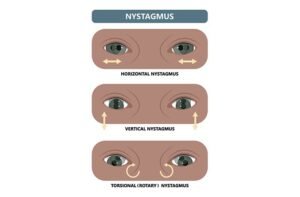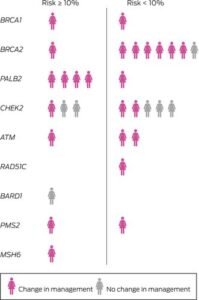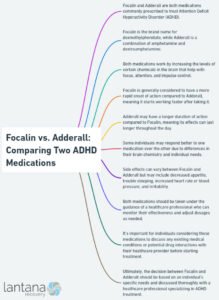Oculocutaneous Albinism

Understanding Oculocutaneous Albinism (OCA)
Oculocutaneous albinism (OCA) is the most prevalent form of albinism, a rare group of inherited genetic disorders that reduce melanin production in the eyes, skin, and hair. Affecting approximately 1 in 20,000 individuals worldwide, OCA results from mutations in specific genes responsible for melanin synthesis. The lack of adequate melanin not only impacts pigmentation but also leads to visual impairments and increased skin sensitivity to sunlight.
Key Characteristics of Oculocutaneous Albinism
The extent and appearance of symptoms can vary depending on the type and severity of the genetic mutation. People with very little pigment often experience the most severe visual challenges. In some cases, only the eyes are affected—a condition known as ocular albinism.
Common Signs and Symptoms of OCA
OCA typically presents with both visual and dermatological indicators, which may include:
-
Extremely pale skin, hair, and eye color
-
Skin patches lacking pigment
-
Increased sensitivity to sun exposure
-
Light-colored irises (sometimes appearing red in certain lighting)
-
Blurred or impaired vision
-
Difficulty focusing on fine details
-
Sensitivity to bright light (photophobia)
-
Nystagmus (uncontrolled, rapid eye movements)
-
Head tilting or bobbing
-
Astigmatism and strabismus (misaligned eyes)
Early Detection and Medical Evaluation
At birth, a lack of pigment in the hair, eyelashes, and skin may be noticeable. In such cases, pediatricians often recommend eye exams and ongoing monitoring of skin and visual development. Early diagnosis is crucial for effective management and support.
How OCA Affects Visual Development
Since melanin is vital for the healthy formation of the retina, its deficiency can interfere with normal eye development, causing:
-
Nearsightedness or farsightedness
-
Poor overall vision
-
Astigmatism
-
Sensitivity to light
-
Nystagmus
-
Eye misalignment (squint)
Genetic Causes of Oculocutaneous Albinism
Melanin is produced in specialized cells called melanocytes. In OCA, mutations disrupt melanin production, leading to reduced pigmentation in the skin, eyes, and hair. OCA is inherited in an autosomal recessive pattern, meaning a child must inherit faulty genes from both parents to be affected. Carriers of one mutated gene typically show no symptoms.
There are seven known types of OCA (OCA1 to OCA7), each linked to a different gene mutation. OCA1 and OCA2 are the most widespread. The severity of pigmentation and visual impact depends on the specific type of OCA.
Skin Health and Cancer Risks
Individuals with OCA face a heightened risk of sunburns and skin cancer, particularly melanoma. Prolonged exposure to UV radiation increases these risks significantly, making sun protection an essential part of daily care.
Diagnosing Oculocutaneous Albinism
Diagnosis generally involves a series of evaluations:
-
Physical examination
-
Review of symptoms and pigmentation
-
Family medical history
-
Genetic testing to identify the specific OCA type
-
Eye assessments for macular and retinal development
-
Vision tests and visual-evoked potential (VEP) studies
-
Prenatal screening (in families with known OCA history)
Conditions like Hermansky-Pudlak syndrome can resemble OCA but include other symptoms like excessive bleeding and immune system challenges, so thorough testing is important.
Treatment and Management Strategies
Although there is no cure for OCA, several interventions can enhance vision and protect the skin. A multidisciplinary care team typically includes:
-
Primary care providers
-
Ophthalmologists
-
Dermatologists
-
Genetic counselors
Skin Protection Tips
-
Apply broad-spectrum sunscreen with high SPF daily
-
Avoid direct sun during peak hours
-
Wear protective clothing and wide-brimmed hats
-
Schedule annual skin exams to check for early signs of cancer
Managing Vision Challenges
-
Have yearly eye checkups
-
Use prescription glasses or contacts for visual clarity
-
Wear tinted or UV-blocking sunglasses
-
Consider surgery for strabismus if recommended
Emotional Support and Education Adaptations
Living with a genetic condition like OCA can be emotionally challenging. Counseling services and peer support groups are invaluable for both individuals and families.
In educational settings, children with albinism may benefit from:
-
Classroom seating with optimal lighting
-
Use of magnifying tools or large-print materials
-
Collaborations between teachers and parents to create a supportive learning environment
Community Resources and Support Networks
Several organizations offer support, information, and advocacy for individuals with albinism:
-
National Organization for Albinism and Hypopigmentation (NOAH): Offers educational webinars, summer camps, family meetups, and scholarships.
-
Vision for Tomorrow Foundation: Focuses on empowering individuals with visual impairments to achieve their goals.
-
Albinism Fellowship (UK-based): Provides guidance and support to individuals with albinism and their caregivers.
Conclusion
Oculocutaneous albinism is a rare but impactful genetic condition that influences pigmentation and vision. While it presents physical and psychological challenges, early diagnosis, appropriate medical care, and community support can greatly enhance quality of life for individuals living with OCA.
Frequently Asked Questions (FAQs)
How does OCA impact vision?
Due to melanin deficiency, OCA can affect retinal development, resulting in:
-
Nearsightedness or farsightedness
-
Reduced visual sharpness
-
Astigmatism
-
Light sensitivity
-
Nystagmus
-
Misaligned eyes
How is OCA diagnosed?
OCA is identified through:
-
Physical and eye examinations
-
Review of symptoms and family history
-
Genetic testing
-
Specialized vision assessments like VEP
Expert Insights
-
Apply sunscreen even on cloudy days for effective skin protection
-
Choose eyewear that blocks both UVA and UVB rays
-
Parents should advocate for classroom accommodations early
Key Takeaways
-
OCA affects pigmentation and vision due to genetic mutations
-
Skin protection and regular eye care are essential
-
Emotional and educational support improves quality of life
Join the Community
Get updates, resources, and expert advice by subscribing to our newsletter on genetic conditions, vision health, and skin care.









